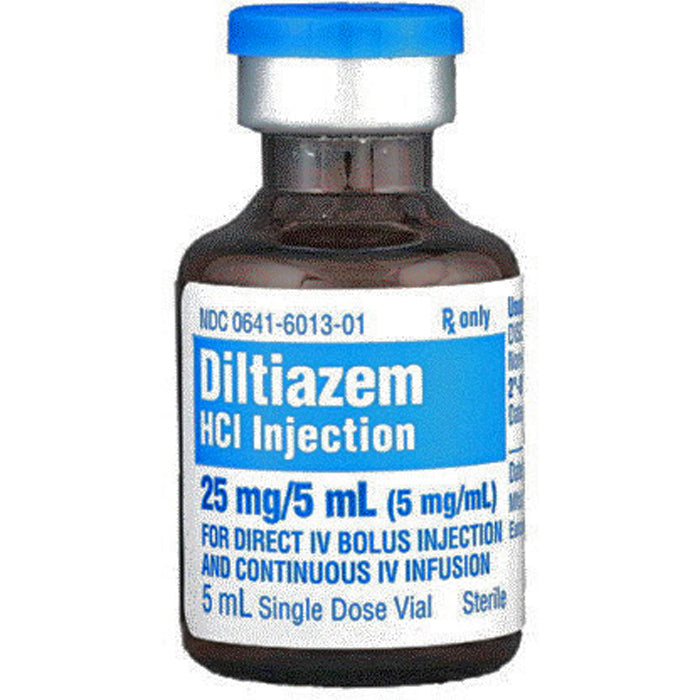Diltiazem Hydrochloride Injection 25 mg Per 5 mL Single-dose Vials 10/Box by Hikma (Rx) *Refrigerated Item*
How to Order:
You will receive instructions on how to create an account along with Rx Ordering Details.
(Note: Acceptable licenses must have Prescriptive Authority in the license issuing state.)
Diltiazem Hydrochloride Injection is a medication used to manage certain heart conditions, specifically to control rapid heart rates in atrial fibrillation, atrial flutter, and paroxysmal supraventricular tachycardia (PSVT). It functions as a calcium channel blocker, helping to relax the heart muscles and blood vessels, thereby reducing heart rate and improving blood flow. Essential in emergency and critical care, it restores normal heart rhythm and alleviates symptoms related to abnormal cardiac activity.
This item must be refrigerated and will ship next day air.
Item ships Signature Required, customer must be available to receive the item.
Diltiazem is a calcium channel blocker that predominately binds to L-type calcium channels in the heart. It inhibits the influx of calcium ions during membrane depolarization, causing significant reduction in myocardial contractility. By slowing the conduction and extension of certain electrical signals, it effectively diminishes atrioventricular node conduction. This results in decelerated heart rate and alleviated cardiac workload, making it highly effective in arrhythmia and angina management.
Warnings:
-
Hypotension Risk: Can cause a significant drop in blood pressure; close monitoring of blood pressure is critical during administration.
-
Bradycardia and AV Block: Potential for induction of bradycardia or exacerbation of AV block; caution advised in patients with pre-existing conduction abnormalities.
-
Heart Failure Considerations: Use cautiously in cases of impaired ventricular function.
- Contraindications: Not advised in patients with hypersensitivity to diltiazem, severe hypotension, sick sinus syndrome or second- or third-degree AV block without a pacemaker, or acute myocardial infarction and pulmonary congestion.
Side Effects:
-
Cardiovascular Effects: Bradycardia, hypotension, and possible exacerbation of heart failure.
-
Central Nervous System: Dizziness, headache, or lightheadedness may occur.
-
Gastrointestinal: Nausea or constipation can occur occasionally.
- Injection Site Reactions: Local irritation or pain at the site of injection might be observed.
Clinical Considerations:
-
Monitoring: Continuous monitoring of ECG and blood pressure is recommended during administration to ensure patient safety and effective response to treatment.
-
Patient Assessment: Assess for any history of cardiac conduction abnormalities and ensure conscientious patient history review to avoid contraindications.
- Dosage and Administration: Administer with accuracy, and consider adjusting the dosage based on the individual patient’s clinical response and tolerability.
The Diltiazem Hydrochloride Injection by Hikma injectables is tailored for health care professionals specializing in cardiology and emergency medicine, providing them with a robust tool for effective acute arrhythmia management. Healthcare providers are urged to consult the full prescribing information and incorporate professional judgment in therapeutic decision-making.


